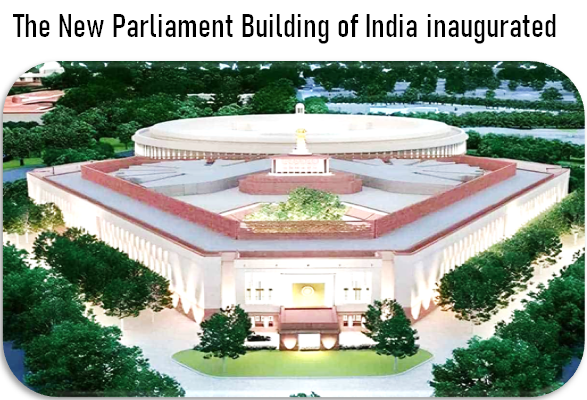New Delhi: India’s new Parliament building has started work.
Prime Minister Narendra Modi laid the sceptre to inaugurate the new Parliament. After unveiling the plaque, the Prime Minister honoured the 40,000 workers who participated in the construction of the Parliament. At the event, Prime Minister Modi honoured a few people by dressing them in shawls as workers’ representatives.
The sceptre was placed near the Lok Sabha Speaker’s seat after the morning pooja. Speaker Om Birla was present alongside the Prime Minister. Other important functions of the inauguration started later.
The event was attended by social and political leaders. The function was attended by 25 parties, including NDA allies. The Prime Minister released Rs. 75 coins and stamps every hour. The prime minister then delivers his speech. The ceremony was boycotted by 21 major opposition parties, including the Congress, in protest of the president’s failure to inaugurate the building.
The new building is adjacent to the existing Parliament building and covers an area of 64,500 square kilometres. A variety of stones and colours will brighten up the Parliament building, built by Tata Projects at a cost of Rs 970 crore. Inside the Parliament, various building materials and colours have been used to represent India’s various states. It also includes building materials from Tripura, Uttar Pradesh, Rajasthan, and other states.
Other features of the materials used in the construction of the new Parliament:
Sandstones were used in the construction of the new Parliament building, as well as the Red Fort and Humayun’s Tomb in New Delhi. They were brought from Rajasthan’s Sarmatura.
In the Lok Sabha chamber, kesharia green stones are used. It was brought from Udaipur, Rajasthan.
The red granite used in the Rajya Sabha was imported from Lakha, Rajasthan. The famous Lakha granite comes from Jaisalmer, Rajasthan. The Rajya Sabha chamber’s white marbles were brought from Ambaji in Rajasthan.
The teak wood in Parliament is imported from Nagpur, Maharashtra.
Stonework can be found in the Parliament building’s vents. The necessary stones were transported from Rajasthan, Noida, and Uttar Pradesh.
Daman & Diu supplied the steel ceiling elements.
The materials used to inscribe the Ashoka mudra were brought from places like Aurangabad and Jaipur.
Ashoka Chakras inscribed in the Lok Sabha and Rajya Sabha were sourced from Indore.
Sculptures associated with stone carvings are from Udaipur’s Abu Road.
Aside from these, various types of stones for various purposes have been collected from Kotputli in Rajasthan.
Irish Samachar English News
Kindly click the link below to join WhatsApp group chat to get important news and breaking news from Irish Samachar.


Comments are closed.